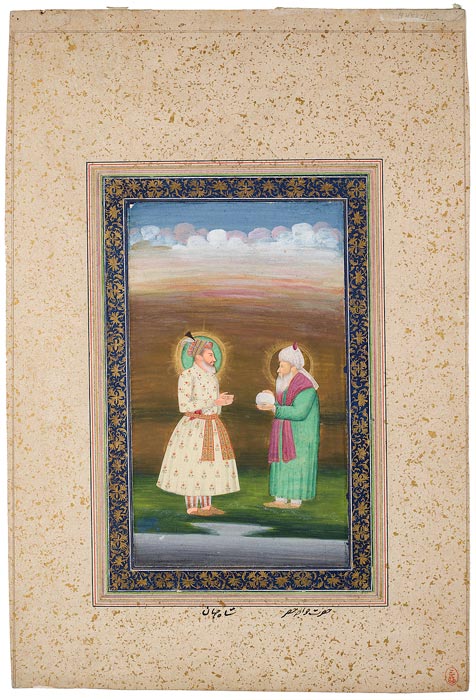
On a 6 November 1654 trip to Ajmer, the Mughal emperor Shāh Jahān had a vision of the prophet Khiżr as he approached the city walls. Khiżr, who set off with Iskandar (Alexander the Great) to search for the water of eternal life, was regarded as the spiritual founder of the Chishtī order of Sufis centered at Ajmer. A seventeenth-century miniature in St. Petersburg shows Khiżr presenting a globe upon which a glass of water rests. The globe suggests peaceful dominion, and the water may refer to eternal life. In this miniature, however, a body of water in the foreground replaces the glass. Khiżr wears his customary green (his name means "the green one"). Both men have haloes and are identified by inscriptions.
The Read Mughal Album
Pierpont Morgan purchased the Read Mughal album, along with a Persian album, from Sir Charles Hercules Read, Keeper of British and Medieval Antiquities at the British Museum, in 1911. The Morgan purchase consisted of thirty folios (including both Indian miniatures and the Mughal portraits presented here), but Read owned at least forty-eight others, now widely dispersed. The leaves were probably once bound in several lacquered bindings. The identity of their compiler has not been established, but many borders date from the eighteenth and nineteenth centuries. The Mughal emperors of India commissioned biographies and were frequently portrayed by artists. Here the paintings are presented in the order of the emperor's reigns rather than the dates of the miniatures, starting with Bābur (r. 1526–30), the Muslim founder of the dynasty, and ending with Shāh Jahān (r. 1628–58), builder of the Taj Mahal.
